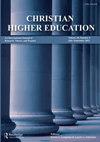Firm in the Faith: How Religiously Affiliated Institutions Stay True to their Religious Moorings
IF 0.5
Q4 EDUCATION & EDUCATIONAL RESEARCH
引用次数: 0
Abstract
Abstract During a period when secularization poses many challenges to religiously affiliated colleges and universities, several key factors have been identified that can support these institutions in effectively meeting those challenges. This article identifies four of the principal drivers of secularization and how they have manifested themselves over the course of the 20th century. Those drivers are changes in the composition of university leadership, faculty, and student body; a push to comply with the accepted standards for academic excellence and the secularization of knowledge; a desire to be more like mainstream colleges and universities; and the need to accommodate growing religious pluralism in society. The article also identifies important actions that can support religiously affiliated postsecondary institutions in staying connected to their founding religious traditions. These factors include a clearly articulated vision for the institution that is based in the religious tradition, university leadership that is supportive of maintaining the connection between institution and religious tradition, and a strong campus culture based in the values of the religious tradition. The article then uses the experiences of Brigham Young University as an example of how these factors work together to counter secularization. The leadership decisions and actions taken by The Church of Jesus Christ of Latter-day Saints and Brigham Young University President Howard S. McDonald (1945–1949) are offered as a case study that may provide insights to other institutions at a time when trends in the United States continue to shift toward secularization.坚定信仰:宗教附属机构如何忠于其宗教系泊
在世俗化给宗教附属学院和大学带来许多挑战的时期,已经确定了几个关键因素,可以支持这些机构有效地应对这些挑战。本文确定了世俗化的四个主要驱动因素,以及它们在20世纪的进程中是如何表现出来的。这些驱动因素是大学领导层、教师和学生组成的变化;推动遵守学术卓越和知识世俗化的公认标准;希望更像主流学院和大学;以及适应社会中日益增长的宗教多元化的需要。文章还指出了支持宗教附属高等教育机构与其创始宗教传统保持联系的重要行动。这些因素包括以宗教传统为基础的大学清晰的愿景,支持保持大学与宗教传统之间联系的大学领导层,以及以宗教传统价值观为基础的强大校园文化。然后,文章以杨百翰大学的经验为例,说明这些因素如何共同作用,以对抗世俗化。耶稣基督后期圣徒教会和杨百翰大学校长霍华德·麦克唐纳(Howard S. McDonald, 1945-1949)的领导决策和行动,作为一个案例研究,可以在美国继续向世俗化的趋势转变的时候,为其他机构提供见解。
本文章由计算机程序翻译,如有差异,请以英文原文为准。
求助全文
约1分钟内获得全文
求助全文

 求助内容:
求助内容: 应助结果提醒方式:
应助结果提醒方式:


